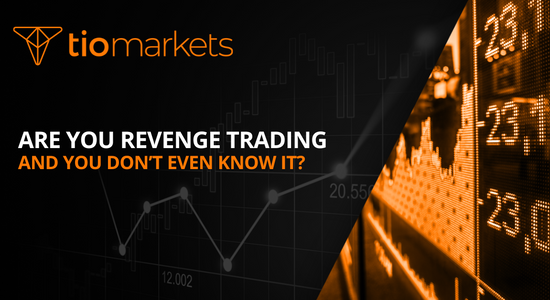How to Use MACD in Trend Following?
BY TIO Staff
|Jun 20, 2024The Moving Average Convergence Divergence (MACD) is a powerful tool in the arsenal of a trend-following trader. This technical indicator is designed to reveal changes in the strength, direction, momentum, and duration of a trend in a stock's price. Understanding how to effectively use MACD can significantly enhance your trading strategy, especially in the volatile world of cryptocurrency. Let's delve into the mechanics of MACD and explore strategies for leveraging this indicator in trend following.
Understanding the MACD Indicator
The MACD is a trend-following momentum indicator that shows the relationship between two moving averages of a security’s price. It is calculated by subtracting the 26-period Exponential Moving Average (EMA) from the 12-period EMA. The result of this calculation is the MACD line. A nine-day EMA of the MACD, called the "signal line," is then plotted on top of the MACD line, which can function as a trigger for buy and sell signals.
Components of the MACD
The MACD consists of three components: the MACD line, the signal line, and the histogram. The MACD line represents the difference between the 12 and 26-period EMAs. The signal line is the 9-period EMA of the MACD line. The histogram represents the difference between the MACD line and the signal line. When the MACD line crosses above the signal line, it is considered bullish, and when it crosses below, it is considered bearish.
Understanding these components is crucial for interpreting the MACD's signals accurately and making informed trading decisions.
Interpreting MACD Signals
Traders use the MACD to identify potential buy or sell opportunities around when the MACD line crosses the signal line. Bullish crossover signals occur when the MACD line moves above the signal line, indicating a potential upward movement in the asset's price. Conversely, bearish crossover signals occur when the MACD line moves below the signal line, suggesting a potential downward movement.
Additionally, divergence between the MACD and price action is a significant signal. If the price of an asset is making new highs while the MACD is failing to reach new highs, this is considered a bearish divergence, indicating a possible reversal. Similarly, if the price is making new lows while the MACD is failing to make new lows, this is considered bullish divergence.
Applying MACD in Crypto Trading
The volatile nature of cryptocurrency markets makes the MACD an invaluable tool for traders. By identifying trend changes and momentum shifts, traders can make more informed decisions on entry and exit points.
MACD in Trend Following Strategies
In trend following, the goal is to capture the majority of a market trend, from beginning to end. By applying the MACD indicator, traders can effectively identify the beginning of a trend through crossover signals and the momentum behind it through the histogram. For instance, a trader might enter a long position when the MACD line crosses above the signal line and exit the position when it crosses below, capturing the trend's upward movement.
Moreover, the MACD's ability to highlight divergence can alert traders to potential reversals or slowdowns in the trend, allowing them to protect their investments by adjusting their positions accordingly.
Adjusting MACD Settings for Crypto Markets
While the standard MACD settings (12, 26, 9) are effective for many markets, the unique characteristics of cryptocurrency markets may require adjustments. Due to higher volatility and trading volume, some traders prefer to shorten the EMA periods for more responsive signals. Experimenting with different settings can help traders find the optimal configuration for their trading style and the specific crypto assets they are trading.
It's important to note, however, that while adjusting settings can provide more timely signals, it may also increase the rate of false signals. Therefore, traders should use backtesting and practice on demo accounts to refine their strategies.
Combining MACD with Other Indicators
While the MACD is a powerful tool on its own, combining it with other technical indicators can enhance its effectiveness and provide a more comprehensive view of the market.
MACD and Relative Strength Index (RSI)
The Relative Strength Index (RSI) is a momentum oscillator that measures the speed and change of price movements. Combining the MACD with the RSI can help confirm trend directions and strength. For example, if both the MACD and RSI indicate an overbought condition, it may suggest a stronger likelihood of a downward reversal.
Similarly, if both indicators show oversold conditions, it could indicate a potential upward reversal. Using these indicators in tandem can provide a more robust framework for making trading decisions.
MACD and Moving Averages
Incorporating moving averages with the MACD can help traders identify more precise entry and exit points. For instance, entering a trade when the price is above a certain moving average and the MACD line crosses above the signal line can increase the probability of entering a strong uptrend. Conversely, exiting a trade when the price falls below a moving average and the MACD line crosses below the signal line can help lock in profits and minimize losses.
Using moving averages of different lengths can also help traders identify short-term and long-term trends, providing a clearer picture of the market's direction.
MACD and Bollinger Bands
Another popular technical analysis tool that can be combined with the MACD is Bollinger Bands. Bollinger Bands consist of a middle band being an N-period simple moving average, an upper band at K times an N-period standard deviation above the middle band, and a lower band at K times an N-period standard deviation below the middle band. When the price touches the upper Bollinger Band and the MACD indicates overbought conditions, it may signal a potential reversal. Conversely, when the price touches the lower Bollinger Band and the MACD indicates oversold conditions, it may suggest a buying opportunity.
By integrating Bollinger Bands with the MACD, traders can gain additional insights into potential price reversals and market volatility, enhancing their decision-making process.
Using MACD Histogram for Divergence
The MACD histogram, which represents the difference between the MACD line and the signal line, can be a valuable tool for identifying divergence patterns. Divergence occurs when the price of an asset moves in the opposite direction of the MACD histogram. This discrepancy can signal potential trend reversals or shifts in momentum.
For example, if the price of a cryptocurrency is making new highs, but the MACD histogram is showing lower highs, it could indicate weakening bullish momentum and a possible trend reversal. Conversely, if the price is making new lows while the MACD histogram is forming higher lows, it may suggest a weakening bearish trend and a potential upward reversal.
Using MACD Histogram for Confirmation
In addition to identifying divergence patterns, traders can use the MACD histogram for confirmation of trend strength. When the histogram bars are increasing in size, it indicates that the gap between the MACD line and the signal line is widening, signaling a strengthening trend. Conversely, shrinking histogram bars suggest a potential loss of momentum and a weakening trend.
By monitoring the MACD histogram alongside the MACD line and signal line, traders can gain a more comprehensive understanding of the underlying trend dynamics and make more informed trading decisions.
Conclusion
The MACD is a versatile and powerful tool for trend-following traders, especially in the cryptocurrency markets. By understanding its components and signals, traders can use the MACD to identify trend directions, momentum shifts, and potential reversals. Combining the MACD with other technical indicators can further enhance its effectiveness, providing a more comprehensive analysis of market conditions. As with any trading strategy, it's important to practice risk management and continue learning to adapt to the ever-changing crypto landscape.
Start Trend Following with TIOmarkets Today
Ready to apply your knowledge of MACD in trend following to the real markets? Join TIOmarkets, a top rated forex broker, and start trading a diverse range of assets including Forex, indices, stocks, commodities, and futures. Benefit from low fees, over 300+ instruments across 5 markets, and join a growing community of 170,000+ traders in over 170 countries. Enhance your trading skills with our comprehensive educational resources and step-by-step guides. Create a Trading Account now and take the first step towards mastering the markets with TIOmarkets.

Risk Disclaimer - of Liability: The authors, publishers, and distributors of this article are not responsible for any losses, damages, or liabilities that may arise from the use of the information contained herein. Readers are encouraged to seek professional advice from a qualified financial advisor before engaging in any trading activities.
By accessing this article, you acknowledge and agree that you are fully responsible for your trading decisions and any resulting outcomes. Always conduct thorough research and consider your financial situation, risk tolerance, and investment objectives before making any trading decisions.
Join us on social media

Behind every blog post lies the combined experience of the people working at TIOmarkets. We are a team of dedicated industry professionals and financial markets enthusiasts committed to providing you with trading education and financial markets commentary. Our goal is to help empower you with the knowledge you need to trade in the markets effectively.
Related Posts
undefined



